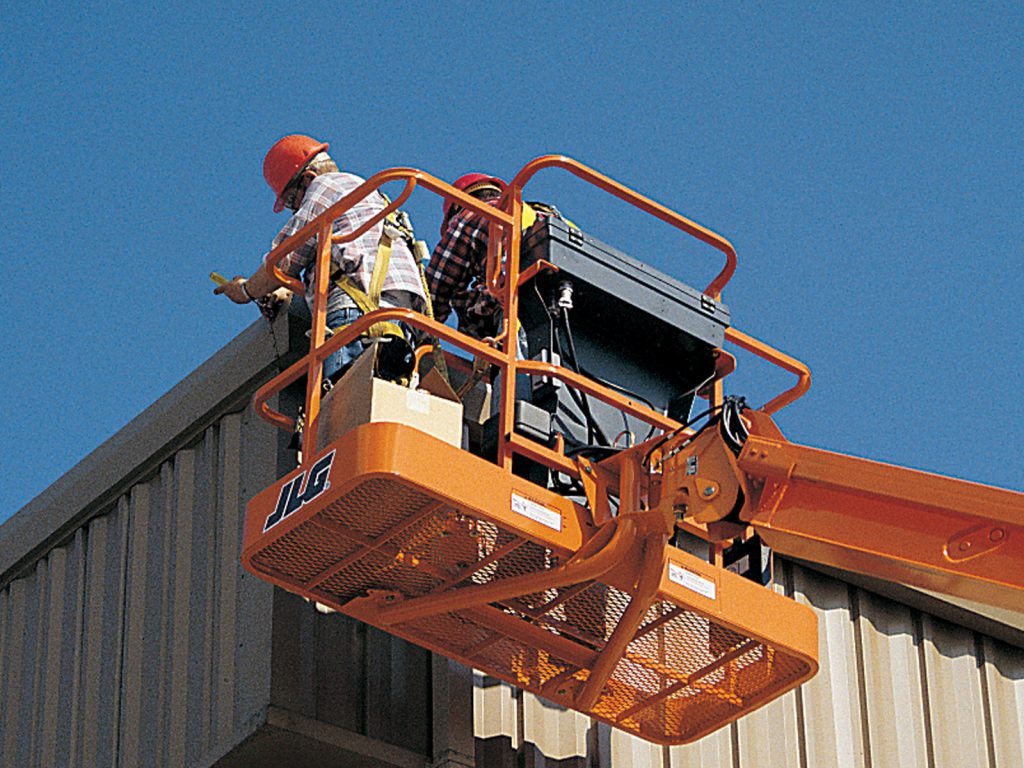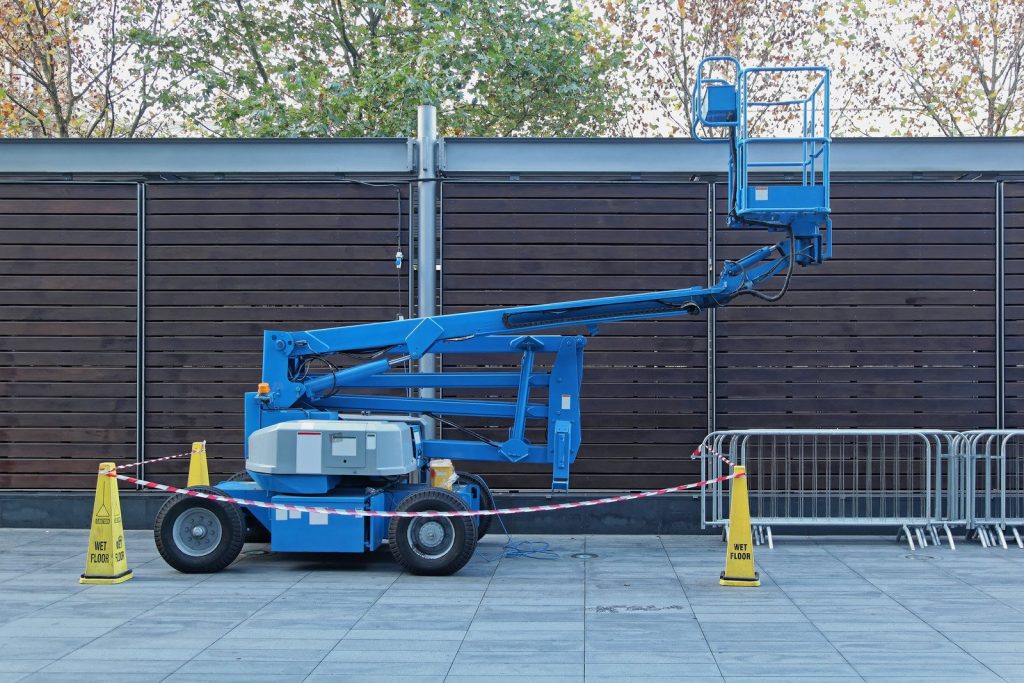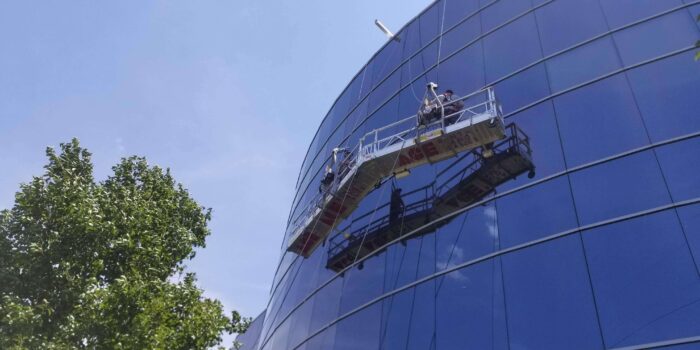What are mobile platforms?
Mobile platforms are crane-type construction machines used to move people and materials to a specific workstation, both vertically and horizontally. The common language also includes the names 'basket' and also 'boom lift'.

Application
Aerial work platforms are used primarily in the construction, service and industrial sectors. They are widely used for all kinds of work at height, including cleaning windows, glazing and facades of buildings, pruning and trimming trees and bushes, work on power lines, assembly and renovation work on construction sites, warehouse work, industry in the broader sense, and even mounting graphics on billboards).
Design elements
The basic and invariable components of a lift are the basket/gondola and the platform responsible for the movement. Depending on the type of lift, this may be a crane or a linkage. In addition to these, there are a whole host of components specific to particular categories of machine, as discussed below.
Breakdown by type:

- Hanging platforms - commonly used, for example, by window cleaning crews in skyscrapers. They consist primarily of:
- the supporting structure of the platform,
- working platform,
- load-bearing ropes and safety lines,
- winches,
- the grip apparatus,
- friction winch,
- the running wheel of the work platform,
- hanger,
- balustrade railings,
- balustrade crosspieces,
- kerb,
- floors,
- vertical balustrade post,
- bumper rollers.
Depending on their intended use, these platforms can either be permanently fixed to a specific building (e.g. for renovation purposes) or temporarily mounted on special structural rails. The biggest advantage of this technical solution is its ease of transport and assembly. The biggest disadvantage is its susceptibility to external factors, particularly wind.
- mast platforms:
- single-mast,
- two-masted.
The mast platform as a whole consists of: the mast on which the work platform moves and the base (chassis) on which the mast rests, the drive mechanism used to move the work platform.
The advantage of this type of platform lies in its compact design, perfect for operating in narrow spaces. Unfortunately, this is at the expense of its relatively short reach. This is why mast platforms have found widespread use, particularly in warehouses, archives and sorting centres.
- Low-speed platforms
As the name suggests, they are distinguished primarily by the drive they have (combustion or electric). Taking into account the type of superstructure that supports the working platform, free-running platforms are divided into:
- scissor platforms - folding in and out of the scissor mechanism allows the working platform to move vertically,
- telescopic platforms - the support structure is in the form of a telescopic mast,
- Articulated platforms - the support structure takes the form of an articulated broken mast,
- telescopic-articulated platforms.
- loading platforms / tailboards

These are platforms attached to the rear of vans (up to 750 kg capacity) or trucks (up to 1,500 kg capacity), usually hydraulically powered. They are used to lift a load for loading or unloading. When mounted on a vehicle, the loading lift becomes an integral part of the vehicle,
Necessary permissions
Mobile platforms, like most tools and construction aids, are subject to the supervision of the Office of Technical Inspection. This authority also issues appropriate powers on the basis ofRegulation of the Council of Ministers of December 7, 2012 on types of technical devices subject to technical inspection (Journal of Laws of 2012, No. 0, item 1468), issued pursuant to Art. 5 sec. 2 of the Act on technical inspection and rRegulation of the Minister of Entrepreneurship and Technology of October 30, 2018 on technical conditions of technical supervision in the field of operation, repair and modernization of handling equipment (Journal of Laws 2018, item 2176).


